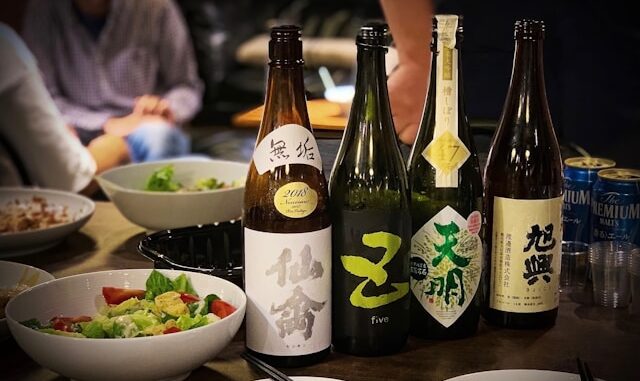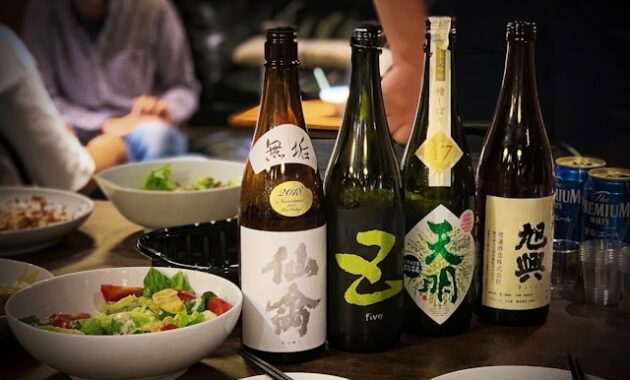
Kagoshima, nestled in the southernmost part of Kyushu, is not only known for its active volcano Sakurajima or its historical connections to the Meiji Restoration, but also for a rich, vibrant food culture that reflects its distinct geography, climate, and heritage. From the famed Kurobuta pork to the comforting savor of Satsuma-age, Kagoshima’s culinary scene is a treasure trove for gourmands seeking authenticity and depth in every bite.
Kurobuta Pork: The Black Jewel of Kagoshima
At the heart of Kagoshima’s culinary fame lies Kurobuta, or “black pork,” a delicacy derived from the Berkshire pig. This breed, introduced to Japan over 400 years ago, has flourished in the lush landscapes of Kagoshima.
Unparalleled Quality and Taste
What sets Kagoshima Kurobuta apart is its fine marbling, sweetness, and buttery texture. Raised under stringent care and fed nutrient-rich diets, these pigs yield pork that melts in the mouth. Kurobuta is commonly enjoyed in dishes such as:
- Shabu-shabu: Thinly sliced pork simmered in hot broth, served with ponzu sauce and vegetables.
- Tonkatsu: Deep-fried breaded cutlets with a crunchy exterior and juicy interior.
- Kurobuta Donburi: A savory bowl of rice topped with grilled pork slices glazed with a soy-based sauce.
Each preparation accentuates the pork’s natural umami and tenderness, earning it accolades both domestically and internationally.
Satsuma-age: Kagoshima’s Iconic Fish Cake
A quintessential Kagoshima specialty, Satsuma-age is a type of deep-fried fish cake made from minced fish, often combined with vegetables or seafood like squid or shrimp.
Deep-Fried Tradition with Local Flair
Unlike other regional variants, Satsuma-age uses sweet potato starch—a nod to Kagoshima’s reputation as Japan’s largest producer of sweet potatoes. This gives the cakes a slightly sweet taste and springy texture. Served hot or cold, in bento boxes, or as part of an oden stew, Satsuma-age is both versatile and deeply satisfying.
Some popular types include:
- Gobo-ten (burdock root)
- Ika-ten (squid)
- Yasai-ten (vegetable mix)
Pair these with a glass of Kagoshima shochu for a truly local experience.
Sweet Potato Culture: More Than Just a Staple
Sweet potatoes are more than an agricultural product in Kagoshima—they are a cultural cornerstone. The volcanic soil of the region is ideal for growing Satsumaimo, which finds its way into a range of traditional and modern dishes.
Shochu: Kagoshima’s Signature Spirit

Over 80% of Japan’s sweet potato shochu is produced in Kagoshima. This strong, aromatic distilled beverage has a bold character, pairing perfectly with the region’s hearty dishes. Top brands include:
- Kuro Kirishima
- Satsuma Shiranami
- Isami
Many distilleries offer tours and tastings, revealing the centuries-old techniques behind this celebrated drink.
Sweet Potato Desserts
Kagoshima’s confectioners have elevated sweet potato into delicacies such as Yaki-imo (roasted sweet potato), Imo yokan (jellied sweet potato), and Sweet potato tarts. These treats are a staple in gift shops and tea houses across the prefecture.
Kibinago: The Silver Delicacy of the Sea
Another highlight of Kagoshima’s coastal bounty is Kibinago, or silver-stripe round herring. These tiny fish are a culinary gem, enjoyed raw as sashimi, grilled, or lightly tempura-fried.
Kibinago Sashimi
Perhaps the most visually striking form is Kibinago sashimi, where the fish are meticulously arranged like flower petals and served with vinegared miso or soy sauce. The experience is as much about presentation as taste—light, fresh, and full of oceanic sweetness.
Black Vinegar: Kurozu from Fukuyama
In the scenic Fukuyama district of Kagoshima, black vinegar, or Kurozu, has been brewed using traditional methods for over 200 years. Stored in large clay pots and fermented naturally, Kurozu boasts health benefits and complex flavor.
Culinary and Medicinal Uses
It is used not only in cooking—such as drizzling over salads or stir-fries—but also consumed as a health tonic. Visitors can explore Kurozu museums and vinegar farms, sampling everything from vinegar-infused ice cream to marinades.
Kagoshima Ramen: A Hearty Kyushu Classic
While Tonkotsu ramen is widely associated with Fukuoka, Kagoshima’s version stands out with its own signature flair. Kagoshima ramen uses a pork-based broth but is often blended with chicken stock, vegetables, and dried sardines, creating a milder, richer flavor.
Toppings and Texture
Typical toppings include:
- Char siu (braised pork belly)
- Bean sprouts
- Wood ear mushrooms
- Pickled mustard greens
The noodles are usually thicker and softer than those found in northern Kyushu, giving each bowl a comforting, rustic quality.
Seasonal Delicacies: Eating with the Calendar
Kagoshima’s food is deeply tied to the rhythm of the seasons, with a diverse array of seasonal specialties:
- Spring: Bamboo shoots and fresh greens
- Summer: Flying fish (tobiuo), cold noodles
- Autumn: Chestnuts, taro, matsutake mushrooms
- Winter: Kanpachi (greater amberjack), hot pot dishes
The seasonality of ingredients ensures freshness and allows chefs to highlight the best of each harvest.
Farmer’s Markets and Local Dining Experiences
Kagoshima’s morning markets and food stalls offer a front-row seat to its dynamic food culture. Places like:
- Kagoshima City Market
- Sengan-en Garden food court
- Tenmonkan’s yatai stalls
…offer a vibrant mix of street food, fresh produce, and regional specialties.
For immersive experiences, local farms and restaurants also provide farm-to-table meals, cooking classes, and shochu pairing dinners that showcase the connection between land, sea, and cuisine.
Conclusion: A Culinary Pilgrimage Worth Taking
Kagoshima’s food scene offers more than just nourishment—it is a reflection of its people, history, and landscape. From the indulgent richness of Kurobuta pork to the humble satisfaction of Satsuma-age, every bite tells a story. Whether you’re a first-time visitor or a seasoned traveler, exploring Kagoshima through its food is an unforgettable journey of flavor and tradition.